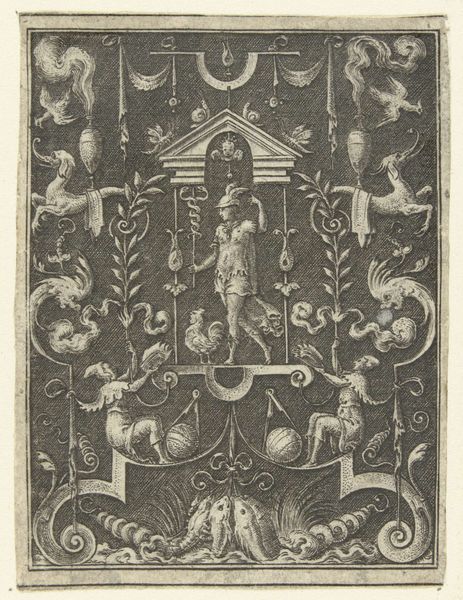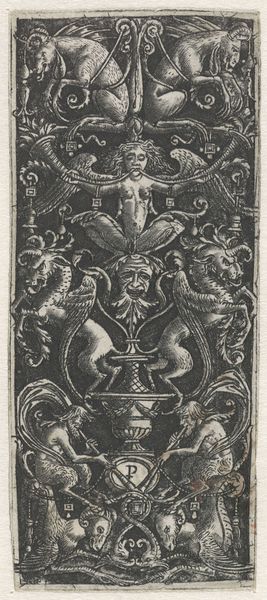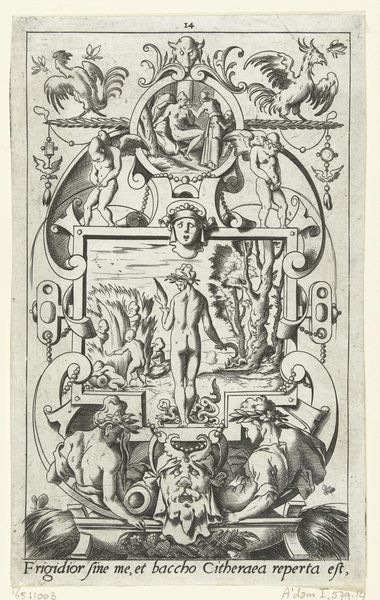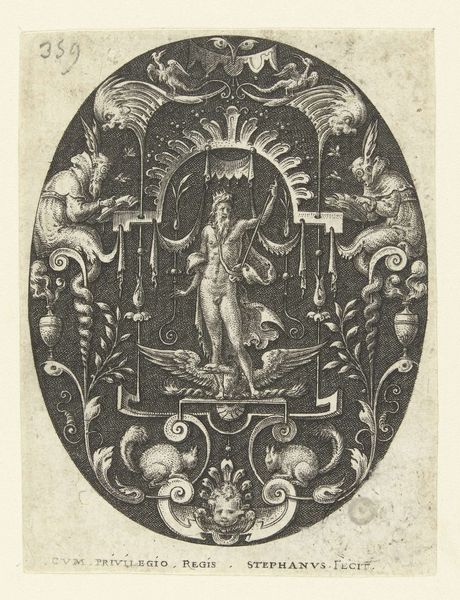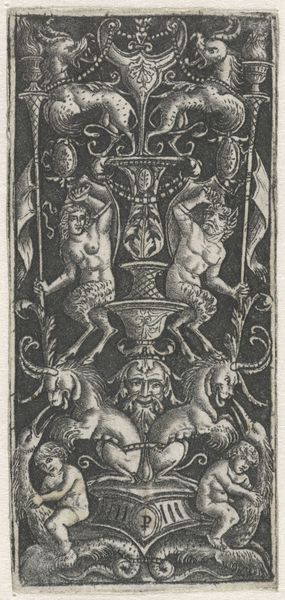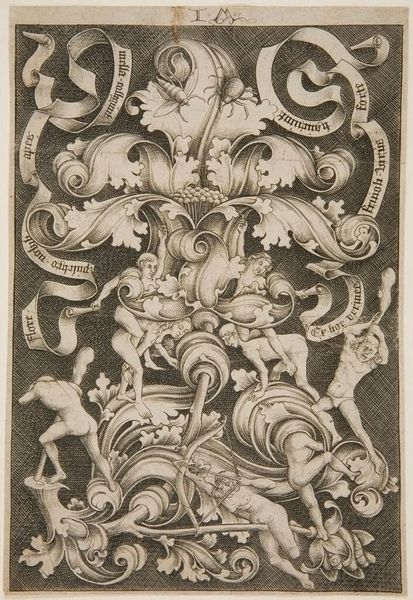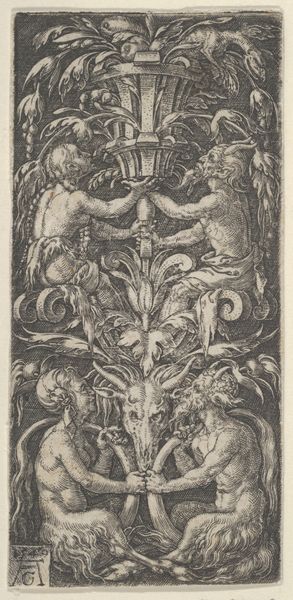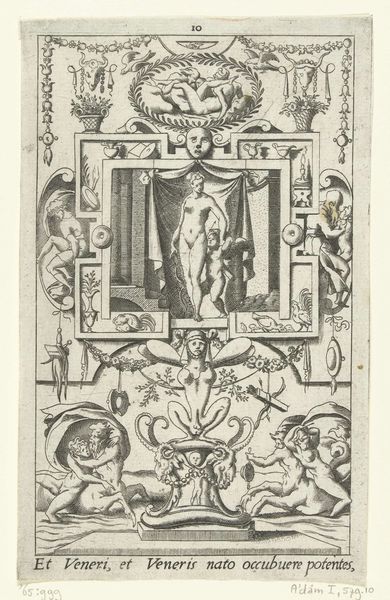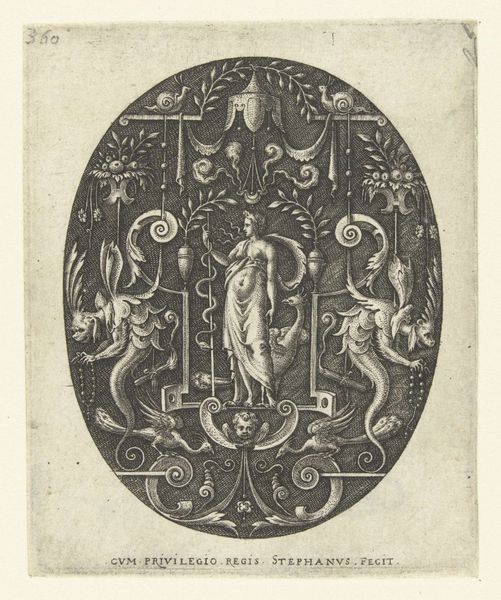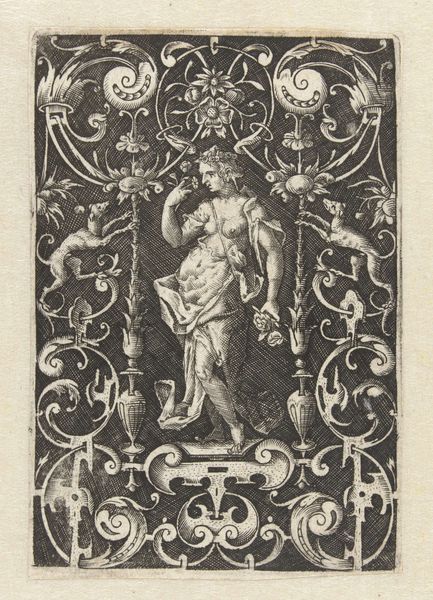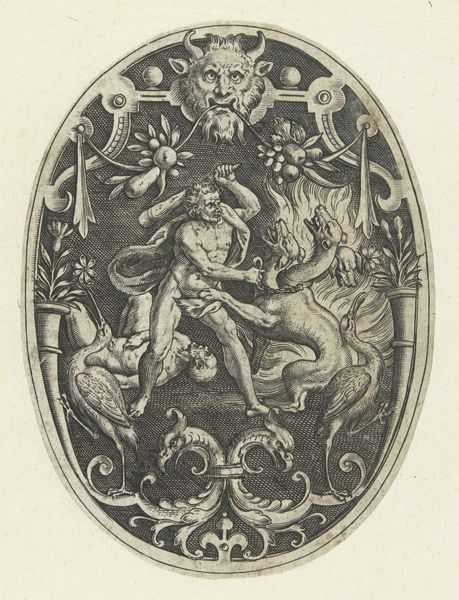
print, engraving
#
allegory
#
pen drawing
# print
#
figuration
#
northern-renaissance
#
engraving
Dimensions: height 103 mm, width 42 mm
Copyright: Rijks Museum: Open Domain
Curator: I’m struck by the immediate tension in this engraving— the grotesque balanced with something sweetly cherubic. What do you see? Editor: It feels very tactile. The way the lines carve out light and shadow emphasizes the physicality of the forms, like it's inviting me to run my fingers over the raised surface. It’s incredibly detailed, considering it's a print. Tell me more. Curator: Certainly. We’re looking at “Vlakdecoratie met twee kinderen,” or “Surface Decoration with Two Children,” made in 1549 by Heinrich Aldegrever. This engraving resides here at the Rijksmuseum, and while it seems like pure decoration, there's so much encoded symbolism at play. Editor: I’m curious about Aldegrever's choice of printmaking. The labor involved would allow dissemination and distribution on a mass scale; were such ornamental designs meant to influence taste? Curator: Precisely! This imagery reflects the allegorical obsession during the Northern Renaissance. The putti, for example, weren’t just chubby babies; they embodied innocence, and were meant to edify or moralize viewers. Consider the contrast – these figures are holding writhing snakes above an ambiguous creature… it becomes a story about the mastery of innocence. Editor: I suppose the means of production play into that didactic purpose. Was this meant for the elite, who could afford such elaborate, and exportable, designs? Did the act of duplication itself lend a certain authority? Curator: No doubt. Aldegrever understood the power of repeatable images. Printmaking allowed the propagation of not just aesthetics, but beliefs too. Look how precisely and tightly he creates those sinuous lines: an army of imagery marching into homes. Editor: So it's more than mere "decoration"; these images were agents of social influence. I’ll certainly never look at decoration the same way. Curator: Indeed, Heinrich Aldegrever captured something universal – how design shapes the cultural landscapes that influence us even now.
Comments
No comments
Be the first to comment and join the conversation on the ultimate creative platform.


